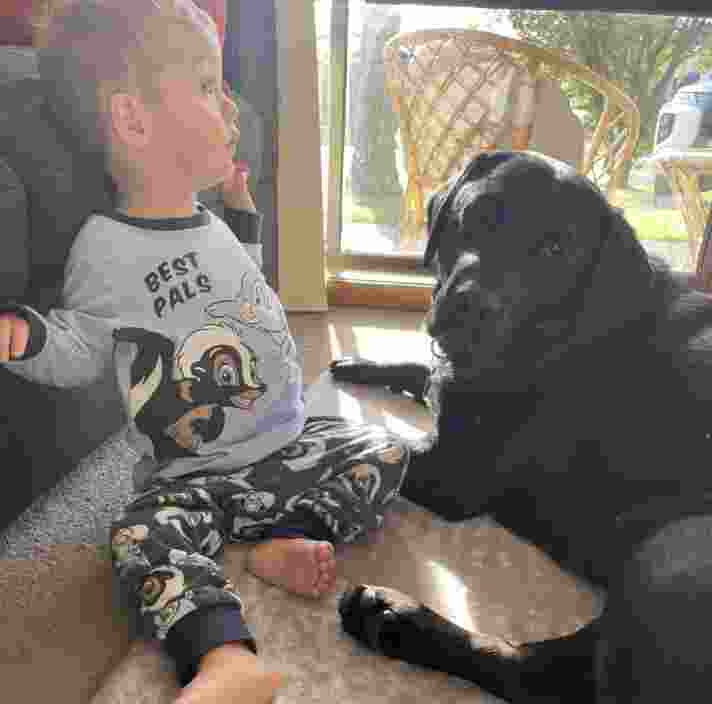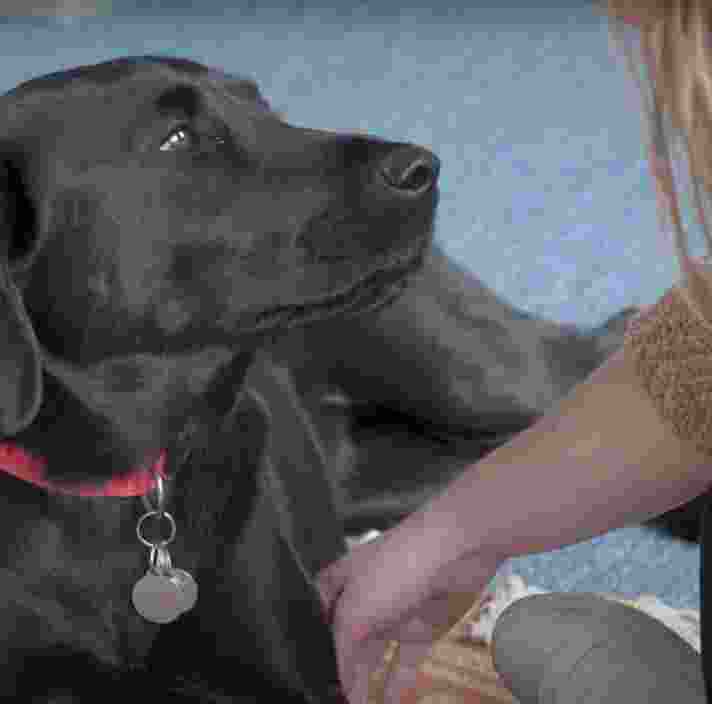On this page:
Therapy Dogs provide comfort, companionship and emotional support to individuals, families and people visiting or living in facilities.
Often tasked to help those who are facing challenges caused by illness, disability, or isolation, they provide loving and unwavering support.
Guide Dogs Victoria relies on the generous contributions of our supporters for over eighty percent of our funding. Your support plays a vital role to ensure we can continue to breed, raise, and train these incredible dogs, and place them in life-changing careers as Guide Dogs and Therapy Dogs.
Please support our wonderful dogs and donate now.
Meet some of our Therapy Dog Heroes
Murphy and Ari, the best of friends!
Ari was matched with Therapy Dog Murphy and they both formed an instant bond.
Being born blind and losing his hearing due to bacterial meningitis, Ari has already faced unimaginable difficulties in his life, but his mother Jamie was determined to ensure that Ari never felt alone. Murphy has turned out to be the perfect companion for Ari as he’s always there by his side, providing comfort and reassurance while Ari gently explores the world around him through touch.
Murphy has also become a source of comfort to the entire family, providing emotional support through his calming presence. Jamie lovingly describes Murphy as a big, affectionate goofball who loves big hugs.
“Murphy is everything we didn’t know we needed.”
– Jamie, Ari’s mum

Nessie and her important role
Nessie is a Therapy Dog who loves nothing more than spending her days helping people.
Nessie chose a different career path when she graduated from Guide Dogs and she now spends her days working with speech pathologist Eleanor, helping children. She greets everyone with a wagging tail when they start their day and is a helpful companion to all who visit.
Nessie is always patient and attentive. Her presence allows the children to feel safe, comfortable and calm, and help them get the most out of their session.

Ready to continue?
Seems like you have filled this form earlier. Let’s pick up where you left off.

